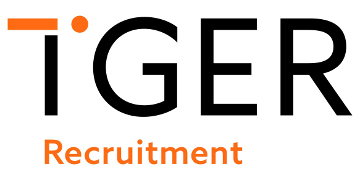According to a study by LinkedIn, the number of users with the title chief diversity officer has grown by 68% since 2015, as companies increasingly put in place specialised leaders to drive DEI as a core business function.
High-profile examples include Renée Tirado, appointed global head of diversity at Gucci in 2019, and Verna Myers, VP Inclusion Strategy at Netflix.
Leadership's role in improving diversity:
What are the D&I trends in 2022?
Strong D&I strategy keeps employees engaged and motivated
Is chief diversity officer a ceiling for black employees?
While the responsibility to drive diversity and inclusion of course falls to senior leaders and decision-makers across an organisation, the CDO helps to shape and lead strategic initiatives and ensure alignment between DEI principles and business strategy.
These initiatives and strategies may include a focus on inclusive recruitment, encourage greater retention of diverse employees or introduce talent development programmes such as mentoring schemes to encourage the promotion of diverse staff through the ranks.
They may also have impact on how an organisation engages externally, including the way that products and services meet the needs or are marketed for a diverse range of customers.
For the individual in the CDO role to have a genuine impact and for DEI to improve as a result, it’s crucial that they are given the power, influence and resources they need to put their strategy in place.
If companies are not prepared to hear what they have to say, or if they are side-lined into ‘just’ being in an HR or people-management role, there is a risk of disempowering the role, or worse, it turning into a vanity hire.
If conversations about inclusion are to be more than just lip service and business leaders are truly ready to make progress, the CDO should not face an uphill battle in getting their voice heard and enabling change.
With the right backing, the CDO can drive meaningful organisational change for the better, making use of the advantages of an inclusive work environment.
Indeed, given that to see real benefits CDOs must operate at a high level within a company, organisations such as Nielsen have in the past had the same individual act as CEO and CDO.
There are merits in this – after all, the CEO should be ensuring that DEI is central to everything the company does, and placing strong authority behind the CDO can encourage faster results.
However, with CEOs overseeing all aspects of the company, they may not have the capacity to give DEI the attention that it needs; Nielsen did eventually appoint a separate CDO.
There is also the question of relevant experience. CDOs need to have a strong understanding and background in DEI that can inform their role.
In the same vein, employees may not feel comfortable having potentially difficult group conversations around diversity at work led by their CEO, especially if the organisation has some way to go in its DEI journey.
On a related note, other senior leaders need to be aware of and actively work in tandem with CDOs to ensure that DEI strategies are being appropriately executed.
In practice, this could involve mentoring schemes to boost career progression or implementing processes that take into account diverse employees’ needs.
Beyond HR and people strategy, CDOs must look at diversifying suppliers or expanding products and solutions to appeal to a more diverse customer base.
Working with the marketing lead, a CDO could look to improve the visibility of ethnically diverse talent in marketing campaigns and company materials.
Of course, work done on this latter point must be accompanied by real action in the HR and people space; the organisational environment must be truly diverse and inclusive so as to avoid tokenising employees in efforts to improve visibility and representation.
There are myriad opportunities, many of which have a commercial benefit: something that won’t go unnoticed with key stakeholders.
However, this kind of collaboration requires all leaders to see DEI as something they have a responsibility to facilitate, and while all employees must work to ensure the workplace is diverse, equitable and inclusive, leadership must take ultimate responsibility.
Accountability for the implementation of DEI initiatives and strategy must sit at the most senior level and having a CDO in place in no way unburdens leaders from acting on and being responsible for diversity and inclusion.
And while research has proven the benefits of diversity in the workplace – such as greater capacity for innovation, more creativity, problem-solving skills as a result of varied lived experiences, and better employee retention due to more empowering working environments – it is vital that accountability is in place.
It’s not enough for an organisation to say they have a CDO and therefore are addressing DEI in the workplace, they need to be able to affect and measure meaningful change.
Robust measurement could be implemented through employee satisfaction surveys and focus groups, as well as regularly collecting and tracking statistics on the diversity of employees.
Even better would be to step up and publicly report relevant data, such as ethnicity and gender pay gaps, as well as the steps being taken to fulfil and exceed their DEI commitments.
It is, of course, promising to see that the role of CDO has become increasingly common – the benefits are clear, and any action taken to move the needle on DEI is welcome.
However, it is vital that the CDO has the correct support in place to ensure they can do their job effectively.
Without the necessary resources or power, companies risk the appearance of having appointed a CDO as a token gesture, even if their initial intentions were good. It is also critical that they take other fundamental steps towards improving diversity if progress is truly to be made.
Anja Skvortsova is managing director of Audeliss










